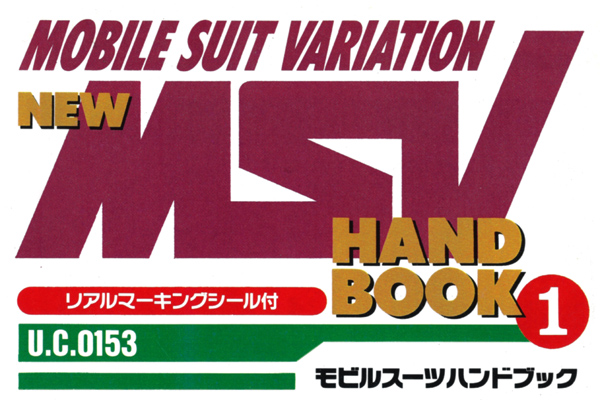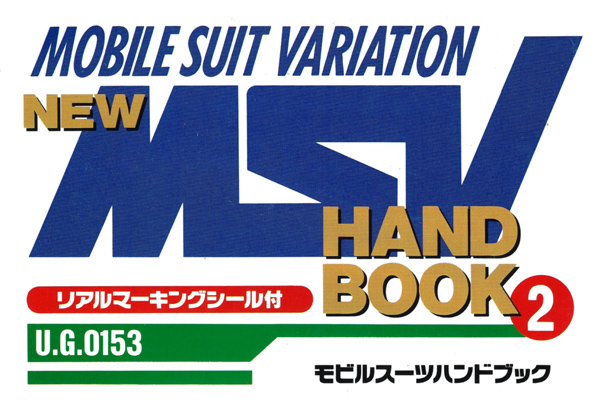ZETA WORLD VOL.2
Zeta World: The Approach to U.C.0087
NEW SERIALIZATION VOL.2
Step β: From Mk-II to Advanced Gundam
Explanation & Illustration: Kazumi Fujita
Super Advisor: Masatoshi Kondo
In the previous article, we delved into the background that led to the development of the Gundam Mk-II. It was about how post-war mobile suit development, fixated on improving various spec data, yet neglecting the evolution of fundamental design concepts of the mobile suit system, resulting in a stalemate in current new model development.
It was from this stagnation that the MK-II project found its roots, tracing back to the illustrious RX-78 Gundam from the One Year War era, heralding a new path in the true evolution of mobile suits. And now, seven years after the war, the Mk-II has reached the prototype stage.
But the question remains: Can the MK-II truly herald the next generation of mobile suits?
This is the crux of our discussion.
☆ ☆
The development background of a weapon cannot be discussed solely in terms of pure technology. In fact, it’s heavily and compellingly laden with human elements—competitive tensions with rival nations, cost considerations, and the pride of development organizations. The Mk-II project, being a remake of a renowned machine from the One Year War, prominently displayed these aspects.
Post-war mobile suit development started with the Federation absorbing Zeon engineers. Anaheim Electronics, with its headquarters on the moon, recruited a large number of Zeon-affiliated engineers through the military and secured the largest orders in the mobile suit division. Earth-based engineers were by no means inferior in their individual fields. However, the environment that allowed Zeon engineers to develop freely without blaming the failure of the former Principality of Zeon may have given them a certain “intuition” regarding mobile suits. They possessed the know-how to develop well-balanced mobile suits overall.
For the Earth supremacists within the Federation military, today’s mobile suits, heavily influenced by Zeon engineers, were never a welcome sight, even if they demonstrated high performance. The Mk-II project aimed to develop a mobile suit symbolizing the superiority of Earth-born personnel by eliminating Zeon engineers. However, this constraint led to a thorough re-evaluation of the original Gundam’s concept, inadvertently paving the way for the Mk-II’s development—a serendipitous outcome that’s hard to criticize entirely.
Now, let’s trace the development process of the Mk-II in a systemic fashion. Actually, before the Mk-II project, attempts had been made to incorporate human anatomical elements into mobile suits. That was the Hizack. It abandoned the fluid pulse motors used in the arms and legs and adopted a cylinder frame-driven system. Regrettably, the technical refinement of the peripheral systems supporting the protruding drive system was insufficient. No remarkable data emerged, and the drive system was simplified at the mass-production stage, which is regrettable.
In the case of the Mk-II, the failure of the Hizack served as a cautionary tale. In other words, when introducing a new design concept, using a conventional model as a base leads to a lack of thoroughness in design. Consequently, the RX series, including the Gundam, was utilized merely as a reference point.
The MAS (Movable & Armable inner Skeleton) system was devised, which further developed the cylinder frame into a comprehensive mobile suit system. This system consists of an inner skeleton unit with cylinder frames, a control system, and an outer unit for protection and additional functions. The organic integration of these three elements is a defining feature.
The movable inner skeleton, which constitutes the core of the MAS system, adopts a layout that more closely resembles human anatomy. This design choice prioritizes the enhancement of the machine’s overall motion potential rather than merely expanding the range of motion of individual mobile suit joints.
Conventional mobile suits use armor as a monocoque exoskeleton, with each joint driven by pulse motors. Therefore, the output of the joints and thruster drive is constrained by the strength of the armor. Consequently, unless the armor itself has a margin of strength, it cannot be reinforced beyond the set output, which is a notable limitation.
The original Gundam circumvented this issue by utilizing Gundarium-α, a material that represented a quantum leap in strength at the time. In contrast, the cylinder frame of the Mk-II features an organic, interconnected design that allows stress generated by the machine’s movement and external forces to be distributed throughout the entire body. This approach ensures that the Mk-II’s performance potential is not limited by the characteristics of its exterior armor.
The cylinder frame’s role in the MAS system extends beyond structural integrity. The joints of the frame serve as option points for peripheral devices, facilitating the integration of control systems, auxiliary devices, and external armor. This modular approach opens up the possibility of developing an armament system that is external to the machine without compromising its inherent flexibility.
Once the conceptual framework of the Mk-II’s base body was established, attention turned to the armament system. The base body represents a fundamentally humanoid view of the mobile suit, requiring the addition of a powered suit to transform it into a combat-ready unit. The core requirements of a mobile suits armament system are secondary armor for protection and stress distribution. However, the Mk-II takes this a step further by incorporating thruster packs that also function as outer armor.
While the Hizack experimented with a similar concept, it was merely an add-on booster system rather than an integral part of the design from the outset. In contrast, the Mk-II’s system was conceived as a seamless component of the armament system from the very beginning. To maximize payload capacity, the armament features option points on the armor, eschewing the traditional internal mounting approach. (As an aside, it is worth noting that the Hi-Zack was initially intended to be equipped with a vulcan pod akin to the Mk-II.) The MAS system, therefore, represents a design philosophy that enables the adaptation and evolution of mobile suits based on their intended operational roles.
While we have thus far focused on the advantages of the MAS system, it is important to acknowledge that the Mk-II, being a prototype, is not without its share of challenges. Firstly, although the cylinder frame drive theoretically offers greater flexibility compared to the pulse motor drive, the lack of comprehensive motion data for the MS body necessitates the incorporation of additional strength and output margins in the design. In essence, the system will not reach its full potential as a weapon platform until it undergoes optimization through the accumulation and analysis of extensive performance data. This limitation also has implications for the onboard computer responsible for controlling the system. The prototype is equipped with a self-learning computer to facilitate data collection. However, to enable seamless coordination of the frames and respond to unforeseen contingencies, the development of advanced software and the integration of high-capacity, high-speed processing computers have become indispensable. This led to the creation of G.E.S-compatible hardware. Inevitably, this results in higher costs compared to conventional models, posing significant challenges for mass production. Cost reduction through the development of simplified variants will be a critical focus area in this regard.
The limitations of the Mk-II prototype become even more apparent when juxtaposed with the Rick Dias, a contemporaneous MS developed by Anaheim Electronics. The Rick Dias epitomizes the design philosophy of Zeon engineers, prioritizing functional enhancements. As a result, it boasts a high degree of refinement and unparalleled performance across various parameters such as firepower and mobility. Moreover, it represents the state-of-the-art in MS technology, featuring armor composed of Gundarium-γ.
While the Mk-II undoubtedly holds promise as an advanced system, its functional enhancements lag behind, resulting in comparatively inferior performance. This is particularly evident in terms of thruster acceleration, where the Rick Dias’ straightforward approach to thrust augmentation proves superior. The lesson here is that no matter how innovative a design concept may be if it fails to deliver competitive performance in real-world scenarios, it risks being dismissed as mere engineering self-indulgence. The Federation military, which championed the Mk-II project, arrived at a similar conclusion. The Mk-II was deemed a failure, and the theft of three prototypes by the AEUG prompted the issuance of an order to halt further development.
However, this decision appears to be a hasty judgment by the military leadership. Although still in the planning stages, the advanced system embodied by the Mk-II demonstrated clear potential to break the impasse in mobile suit development. Moreover, it has come to light that a proposal for a true advanced Gundam, addressing the shortcomings of the Mk-II and evolving it into a functionally enhanced variant, had already been submitted. Such shortsighted decision-making by military authorities is a perennial source of frustration for engineers across all eras.
The prototypes that fell into the hands of the AEUG underwent a rigorous examination before being deployed to the front lines as combat units, where they achieved significant battlefield successes. This can be attributed to the Mk-II’s GES leveraging real-world combat data to unlock its true potential. It serves as a compelling case study illustrating the correlation between a machine’s inherent performance potential and its actual operational effectiveness. Simultaneously, it is a testament to the remarkable capabilities of the AEUG’s engineering team. Implementing numerous enhancements and performance optimizations to the Mk-II in parallel with its active deployment is no mean feat.
According to the latest intelligence, the development of a dedicated booster system tailored specifically to the Mk-II’s frame is currently underway. However, this approach deviates from the true essence of an advanced system. The development of subsystems that rely excessively on the machine’s inherent potential can be viewed as a regression in the context of mobile suit evolution. The true value of advanced mobile suits will be put to the test when a variant emerges that not only addresses the Mk-II’s deficiencies but also incorporates modular options capable of adapting to diverse tactical scenarios. The question remains: when and in what form will such a machine manifest itself?
(To be continued in the next issue)




